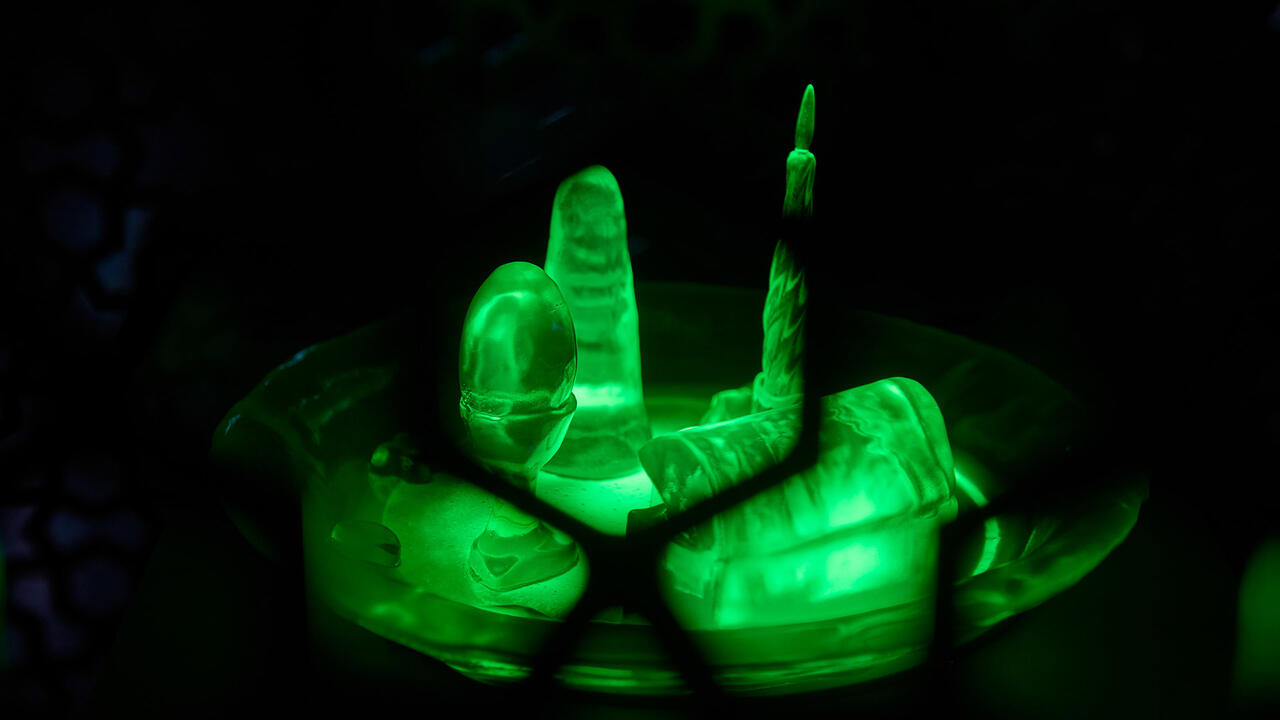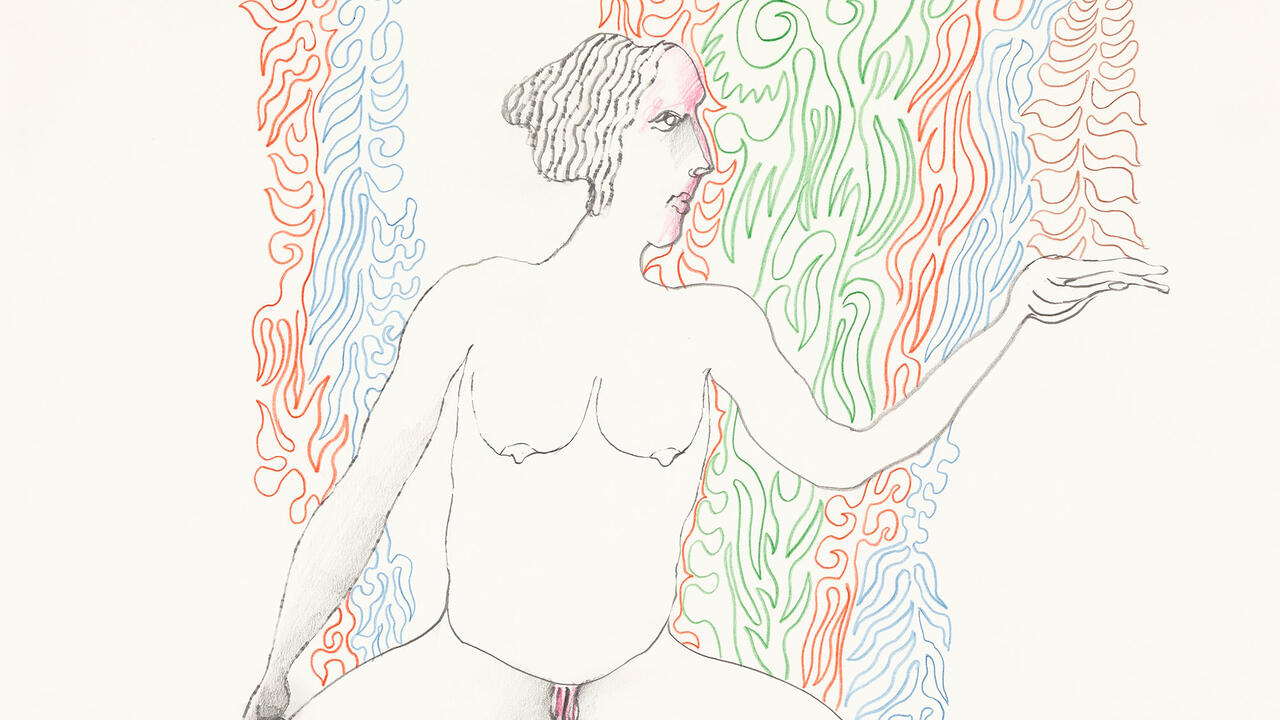Kyle Dunn’s Paintings Portray Games of Anticipation
At the Wadsworth Atheneum, Hartford, the artist’s cinematic tableaux announce his arrival on the mainstage of queer figurative painting
At the Wadsworth Atheneum, Hartford, the artist’s cinematic tableaux announce his arrival on the mainstage of queer figurative painting

City, night: a classic boudoir scene, bathed in warm light. A young man, naked and unbothered, lounges on bunched cobalt sheets, a red full moon visible through a sliver of window. Within this private idyll, Kyle Dunn’s Sea Bell (2024), a chilly game of predator and prey unfolds. Framed over the bed is an image of a heron, a fish caught in its beak; above the youth’s chest an inexplicable frog leaps into the air with balletic precision, lunging towards a moth.
Since 1975, the Wadsworth Atheneum’s MATRIX series has invited promising contemporary artists to stage exhibitions in response to the museum’s eclectic collection; the Brooklyn-based painter is the latest to receive the honour. An enthralling selection of eleven domestic scenes and still lifes, rendered in acrylic on panel, announce Dunn’s arrival on the mainstage of queer figurative painting.

In one of the finest works in the exhibition, The Hunt (2022), a youth – naked except for his socks and one zip-up ankle boot – sits on a dresser, clutching a shirt to his face as if to catch its scent. Beside him, an iPhone throws its pale light on the wall; below him, a reproduction of Pieter Bruegel’s The Hunters in the Snow (1565) is flipped on its side. A jewel-toned drink glistens beside a wedge of sliced citrus, its gelid gleam pierced with a plastic cocktail sword: liquid courage or consolation prize? A dog exits at stage right, advancing the plot. Will this hunt prove successful or end in unrequited longing? There are no answers, only clues.

Another standout is Studio Still Life (2024), an ambitious and pleasingly strange image studded with passages of unfussy virtuosity. Beyond a table in the foreground spread with a lush array of fruit, kitchen implements and studio equipment is a nude figure seen from behind, the cleft of his buttocks slyly obstructed by a large apple. The scene, as curator Jared Quinton mentions in the exhibition text, is rife with innuendo: a pestle rests inside a gaping mortar; a smashed pear oozes sweet nectar; a phallic amaryllis prepares to bloom.
Dunn possesses an instinctual brilliance for surfaces. Lengths of glimmering satin ribbon unfurl from drawers and boxes; metallic objects are streaked with bands of nervous light. Mirrors proliferate across his compositions, suggesting the allusive density and perspectival play of Northern Renaissance painting, while shadows cast by wrought-iron window grilles lend a noirish air. Tension abounds: a roll of tape hangs by its tongue from a table ledge; coins stand on their edges, riveted in a curious stasis. Finished in a buttery, elastic sheen, the figures can seem like mannequins staged for the artist’s delectation, their skin smooth and hairless.

Half the allure of a flawless surface is its potential for despoliation. A mood of light predation haunts Dunn’s compositions – recalling how, in Roman mosaics and Dutch still lifes, a meal’s ingredients (animal, vegetable, mineral) are often laid out for visual consumption, gesturing toward the tantalizing prospect of raw materials transformed into lavish cuisine. A similar spirit animates Dunn’s pictures, games of anticipation that tease the moment of consummation.
Dunn is a natural heir to queer mid-century American modernism: the carnivalesque density of Paul Cadmus; the everyday surrealism of George Tooker or Jared French; the mythological poses of George Platt Lynes. But perhaps more than anything, Quinton notes, the painter shares an affinity for saturated palettes and campy disequilibrium with auteurs like Pedro Almodóvar and Douglas Sirk. Dunn’s cinematic tableaux have established him as one of his generation’s most enigmatic and powerful image-makers. Beneath their placid surfaces lurks an appealing disquiet, a sense that hidden power relations – dark, electric, kinky – are scaffolding the story.
‘KYLE DUNN / MATRIX 194’ is on view at the Wadsworth Atheneum Museum of Art, Hartford, until 1 September
Main image: Kyle Dunn, Coat (detail), 2022, flashe and acrylic on panel. Courtesy: the Wadsworth Atheneum Museum of Art, Hartford, CT























